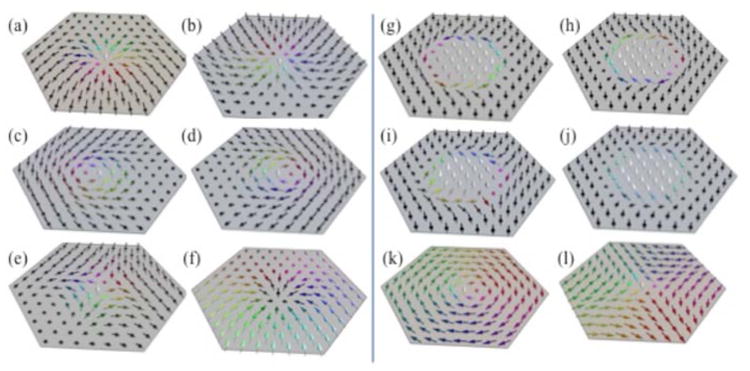Figure 17.

Topology and chirality of skyrmions and vortices. The heavy metal layer is assumed to be below in order to define chirality. Structures (a)-(f) are skyrmions constructed using the Belavin-Polyakov profile (2D Heisenberg exchange coupling only). (a)-(e) are within a down magnetized background with an up core. (a), (b) are right-handed, left-handed Néel (hedgehog-type) respectively with Nsk=+1; (c), (d) left-handed, right-handed Bloch (vortex-type) respectively with Nsk=+1; (e) Nsk= -1, with no defined chirality (because spin directions and spatial coordinates counter-rotate). (f) is within an up magnetized background with a down core, Nsk=-1, right-handed Néel skyrmion (note that this structure is the same as (a) with all directions reversed). Structures (g) - (j) are magnetic bubbles within a down magnetized background with an extended up core; (g), (h) have Nsk=+1, and left-handed/right handed Bloch walls respectively. (i) has 4 Bloch lines at each of which the in-plane moment reverses, reducing Nsk by 1/2, leading to Nsk =-1 (this structure is sometimes called an anti-skyrmion); (j) has 2 Bloch lines and Nsk=0. Structures (k) and (l) are magnetic vortex and antivortex respectively, both with an up core and m in the x-y plane away from the core and Nsk= ±1/2; both are sometimes called merons.
